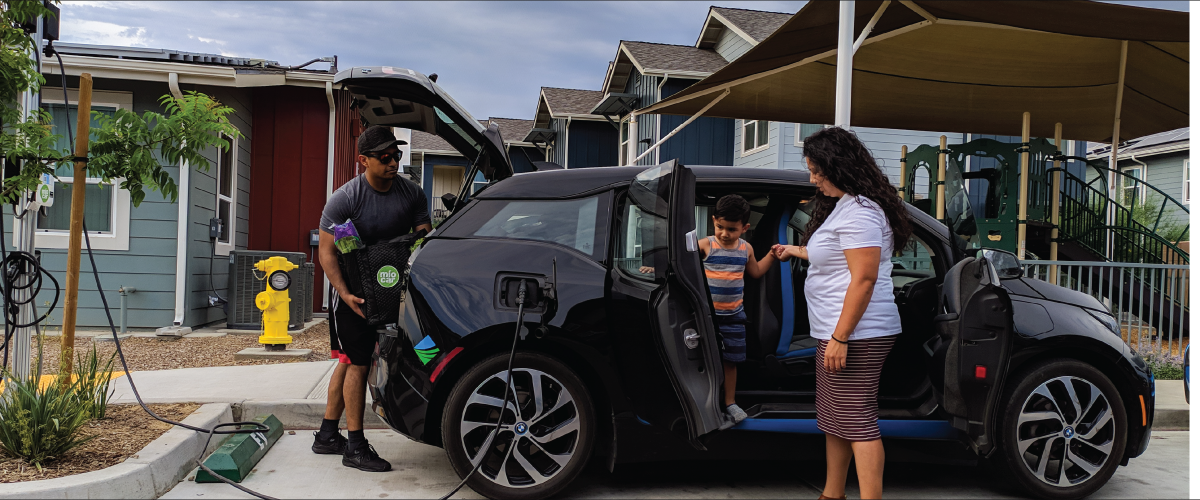Today, I joined Member Scholar and University of San Francisco School of Law professor Alice Kaswan in releasing an in-depth analysis of California’s climate and clean energy funding programs for the state’s historically marginalized and underserved communities.
The set of reports and fact sheets, Funding a Clean and Equitable Energy Transition: Lessons from California, follows the recent publication of the Center’s California Climate Justice Index, which details the laws, executive orders, agencies, funding processes, and funding programs that shape climate policy for the nation’s most populous state.
The new seven-part report first identifies the many sources — including federal dollars, cap-and-trade revenue, state tax revenue, and utility ratepayers — that fund climate justice programs in California. We then dissect how state agencies determine funding priorities, how they plan and design programs, and the various funding mechanisms agencies ultimately use to disburse these funds across various sectors, agencies, individuals, businesses, local governments, regional planning entities, and community groups.
Informed by extensive interviews with community leaders, advocates, and policymakers, and by agency reports, we highlight the systemic barriers that can impair efforts to extend the benefits of the clean energy transition to those in need. We also discuss the critical role community-based organizations and advocates play in program design and implementation.
Professor Kaswan and I offer numerous recommendations to improve existing systems. They include:
- Establishing a central authority that has the capacity to assess the “big picture”;
- Centering community input as early in the planning process as possible; and
- Approaching climate and clean energy programming holistically instead of sending people to multiple, separate agencies to meet their needs.
We close by proposing a “radical alternative” for policymakers and community leaders in the state and beyond. To avoid the roadblocks and extensive resources associated with competitive grants, a process that often leaves out the most under-resourced communities, the state should identify these communities and provide block grants to help them plan and implement a holistic clean energy transition. Resources devoted to the grant application and review process could instead be devoted to providing communities with more direct access to resources to plan and implement community-driven climate solutions that respond to cross-cutting needs and help the state more equitably and effectively achieve its climate goals.
Here’s a roadmap to the series:
- For a quick overview of the series, the executive summary includes our toplines and key recommendations.
- In Part I, the series introduction, we lay out several foundational concepts: why climate funding should focus on climate justice, why funding is a critical component of climate justice, and the overarching principles that permeate the subsequent reports in the series.
- Part II is a fact sheet that describes California funding sources and allocation processes. We outline the funding sources controlled by the legislature, including taxpayer funds and the state Greenhouse Gas Reduction Fund (GGRF), which is composed of revenues from the state’s cap-and-trade program. We then explain the budget development and approval process. Lastly, we note the funds controlled by utilities (as overseen by the Public Utilities Commission) and federal funds that are channeled through state agencies.
- Part III addresses “big picture” questions, including the way the state goes about investment planning and program development. We discuss existing planning efforts, mechanisms for cross-sector program development and coordination, opportunities for community participation in programmatic decisions, and the role of pilot and research programs in developing long-term funding programs. We conclude with several high-level recommendations to improve the cohesiveness and effectiveness of California’s programs.
- Part IV is a fact sheet that provides a general overview of the range of agency funding mechanisms, including formula funding, individual-scale benefits for households or businesses, and the wide range of community-scale opportunities for local governments, community-based organizations, and Tribes.
- Part V dives into the complex factors that determine the degree to which funding mechanisms reach those most in need. The report analyzes different ways to determine eligibility, select recipients, and respond to limitations caused by insufficient funds or access to implementation resources. Part V also addresses an ongoing challenge: the accessibility of programs to those most in need. We consider outreach challenges and application challenges, as well as the measures the state has adopted to meet them, including technical assistance and capacity building. The report also identifies a number of impediments to access, including technical requirements and resistance from local governments. Part V then spotlights numerous recommendations to address these challenges, delving more deeply into three core suggestions: (1) mechanisms for channeling limited funds to those most in need; (2) one-stop shops centralizing outreach and grant administration; and (3) baseline capacity building.
- Part VI continues to analyze different types of funding mechanisms and their administrative structures. This report considers the differing roles played by third-party program administrators and considers the degree to which different types of funding mechanisms are relatively efficient for applicants and agencies, the degree to which they foster community-level planning and offer multi-sector benefits, and the role of community participation within different types of funding mechanisms. We again spotlight common recommendations and then delve more deeply into the respective roles of place-based community approaches versus individual grants. We conclude with a recommendation for joint agency implementation to address interconnected needs wherever possible.
- Part VII of the series offers a more radical alternative approach to funding climate justice. We recommend that the legislature consider a block grant approach to funding a clean energy transition in communities with the greatest need. Under this approach, individuals and communities would not need to apply individually or collectively to receive funds. Once designated as a recipient, the state would provide capacity-building and technical assistance resources to facilitate community planning and participatory budgeting for transition strategies and investments that meet communities’ unique and varied needs.
- We also provide a guide to acronyms and key terms used throughout the series.
Check out our report page or use the links above to access each part of the series.
Banner image courtesy of Míocar.

